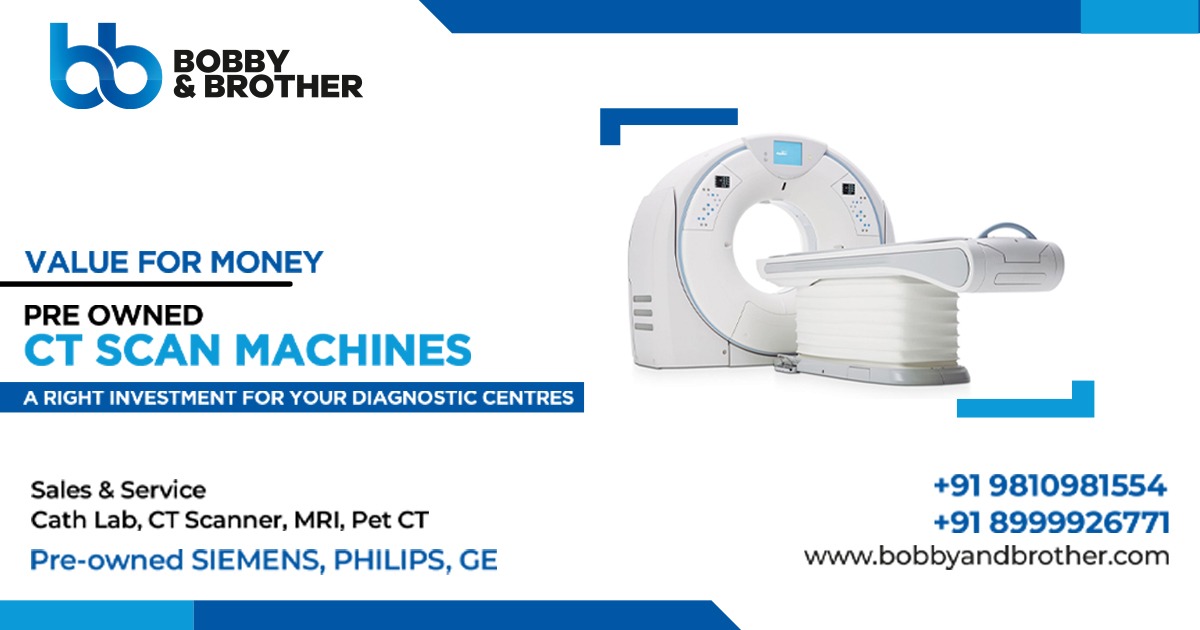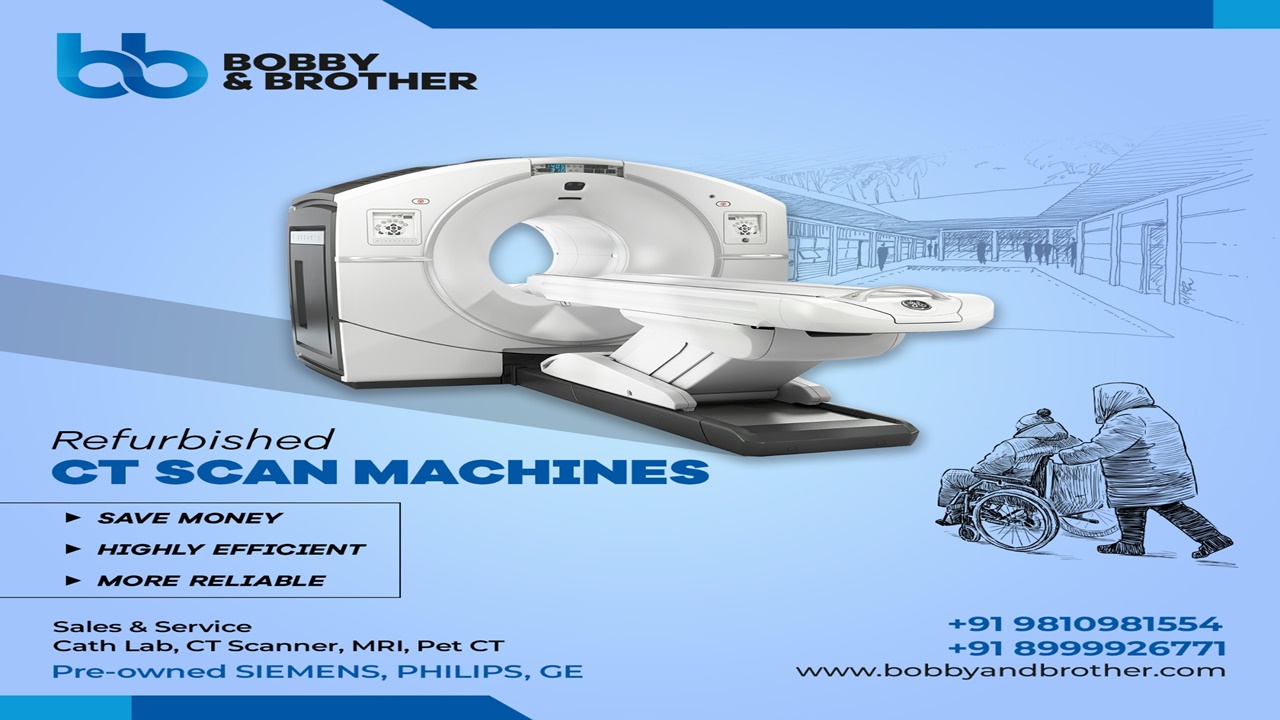Benefits of Refurbished CT Scan Machines
In the realm of modern healthcare, diagnostic imaging plays a vital role in accurate and timely patient care. Among the array of imaging technologies available, CT (Computed Tomography) scan machines are widely used for their ability to provide detailed cross-sectional images of the body.
However, the high cost of acquiring new CT scan machines can pose a significant challenge for healthcare providers, particularly in resource-constrained settings. That’s where Bobby & Brothers, a leading refurbished CT Scan Machine provider across India, steps in with their refurbished CT scan machines, offering substantial cost savings and impressive return on investment.
This blog will delve into the economic benefits of choosing refurbished CT scan machines and how they can optimize the financial health of healthcare institutions.

1. Lower Upfront Costs:
One of the primary economic advantages of refurbished CT scan machines is their significantly lower upfront costs compared to brand-new machines. Bobby & Brothers, with their expertise in refurbishment, meticulously restore pre-owned CT scan machines to excellent working condition. By opting for a refurbished machine, healthcare facilities can acquire state-of-the-art imaging technology at a fraction of the cost, enabling them to allocate their budget more efficiently.
2. Maintenance Savings:
While the upfront cost is a major consideration, ongoing maintenance expenses also factor into the overall economic equation. Bobby & Brothers ensures that all refurbished CT scan machines undergo thorough testing and quality checks, significantly reducing the chances of unexpected breakdowns or malfunctions.
Moreover, we offer comprehensive warranty options and reliable after-sales support, further mitigating potential maintenance costs. With lower maintenance requirements, healthcare providers can allocate their resources to other critical areas of patient care.
3. Extended Lifespan and Enhanced ROI:
Refurbished CT scan machines offer excellent value for money by extending the lifespan of the equipment. Through expert refurbishment processes, obsolete components are replaced and necessary upgrades are implemented, enhancing the machine’s performance and longevity. As a result, healthcare providers can enjoy years of reliable service from their refurbished CT scan machines, maximizing their return on investment and avoiding premature equipment replacement costs.
4. Access to Advanced Technology:
Refurbished CT scan machines are not limited to outdated technology. Bobby & Brothers continuously update its inventory to include modern, feature-rich models, ensuring that healthcare providers have access to advanced imaging capabilities at a reduced cost. This empowers healthcare facilities to offer high-quality diagnostic services without compromising patient care or diagnostic accuracy.
5. Improved Patient Affordability:
By choosing refurbished CT scan machines, healthcare providers can pass on the cost savings to patients, ultimately making diagnostic imaging more affordable. Reduced costs can translate into lower fees for imaging services, easing the financial burden on patients. This accessibility can lead to increased patient volume, further boosting the financial health of the healthcare facility.
We can conclude that, Refurbished CT scan machines offer economic benefits such as lower upfront costs, savings in maintenance, extended lifespan, access to advanced technology and improved patient affordability. Bobby & Brothers provides cost-effective refurbished machines, enabling healthcare facilities to allocate resources efficiently and enhance their financial health.
Follow Us:

